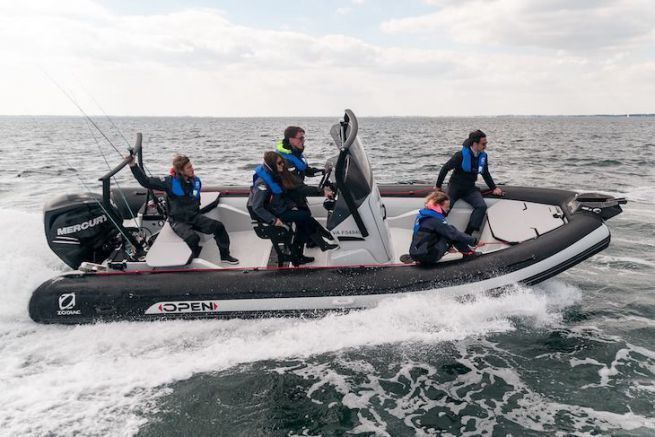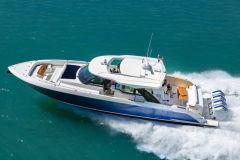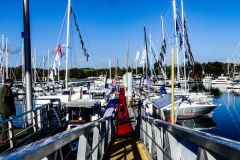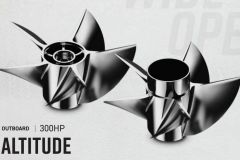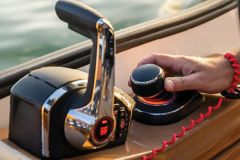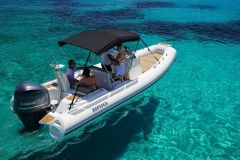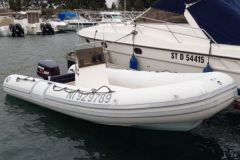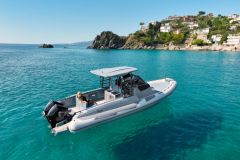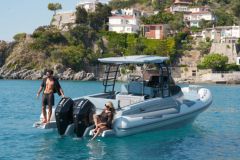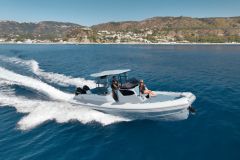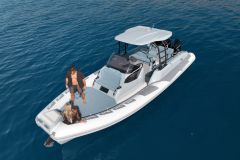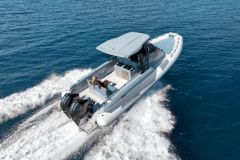A RIB is different from an inflatable, as it features a rigid fiberglass or aluminum hull. This rigid section is surrounded by inflatable floats in PVC, Hypalon-Neoprene or polyurethane. While the idea of an inflatable boat goes back a long way, the Rib appeared in the 70s. The invention seems to have come from the English, but the concept was popularized by the french Paul Bros, creator of the PB Marine brand. Zeppelin and Zodiac would later use the concept to develop their ranges, but it was the Italians in particular who developed the semi-rigid in a major way before the idea caught on worldwide. Today, there's a wide range of models on the market, from the simplest with an adventurous style to the most comfortable maxi-ribs for long-distance cruising. the Rib ranks 2nd among the best-selling motorboats, behind the 6 to 9 m livable models.
Here are the reasons behind the Rib's success story :
Stability/Floatability/Safety
RIBs are extremely stable boats, both at anchor and underway. It's the peripheral floats that ensure this stability, combined with a very low center of gravity. Even though you might feel less secure on a RIB, especially with children, due to its low height above the water, it hardly heels at all, and it is very safe in all sea conditions.

Large boarding capacity
One of the advantages of a RIB is its boarding capacity. By way of comparison, a 22 ft rigid hull can carry 8 people, while a 20 ft RIB can carry 15.
This figure obviously varies from one model to another, and represents a maximum load. In reality, there's rarely enough room for so many people on board. Nevertheless, its loading capacity is an undeniable asset.
Even if you have to adapt your speed and navigation to the number of guests on board, you'll recognize that it's very practical to be able to reach a destination quickly without having to go back and forth to get everyone to their destination!

Navigation
With its low center of gravity, deep-V hull and floats that act as stabilizers and shock absorbers, the semi-rigid offers incomparable speed and crossing capabilities, especially in rough seas.
Its floats are sturdy and often more shock-resistant than a rigid hull. Ideal for reassuring novice sailors, especially when maneuvering in port. Its low height on the water also makes it easier to embark and disembark, including arrivals and departures from pontoons, for example. Finally, its ease of use makes it the ideal ally for beginners.
The RIB is particularly popular as a workboat, because it's simple to use, robust, efficient, easy to operate (in and out of the water) and provides excellent sea passage.
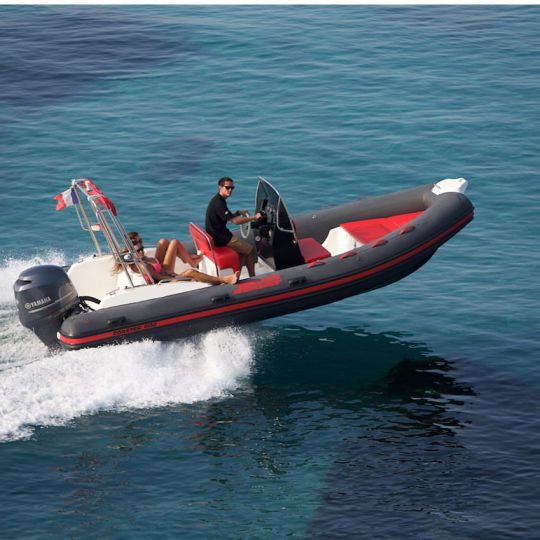
Multiple uses
Today's RIBs are getting bigger, more comfortable and better equipped, so you can extend your outings at sea. They are ideal for cruising, water sports and diving, as well as for fishing, thanks to their stability. In fact, more and more RIBs are dedicated to this leisure activity.
From 6/7 m upwards, you'll find a boat with a saloon/sunbath, kitchenette, large bathing platforms, plenty of storage space and more. The largest units even offer several cabins and bathrooms, making multi-day cruising possible.
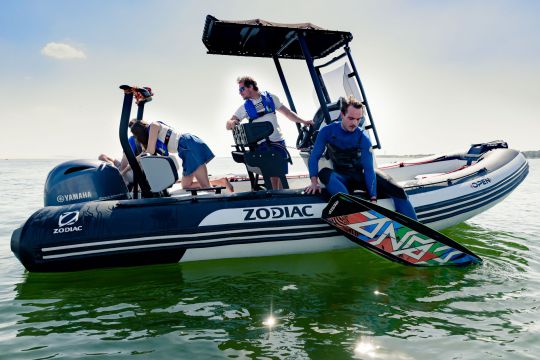
Transportation
Because it weighs less than a rigid hull â?" 760Â kg for a 6Â m boat versus 1âuros020Â kg for a rigid hull of the same size â?" a RIB is easier to transport. Remember, to be transported on a trailer, a boat must not exceed a width of 2.55Â m. However, thanks to deflatable floats, it is possible to increase the width of a boat and tow models wider than this.
It's also easier to launch, especially when trailer-mounted, thanks to its lighter weight.
